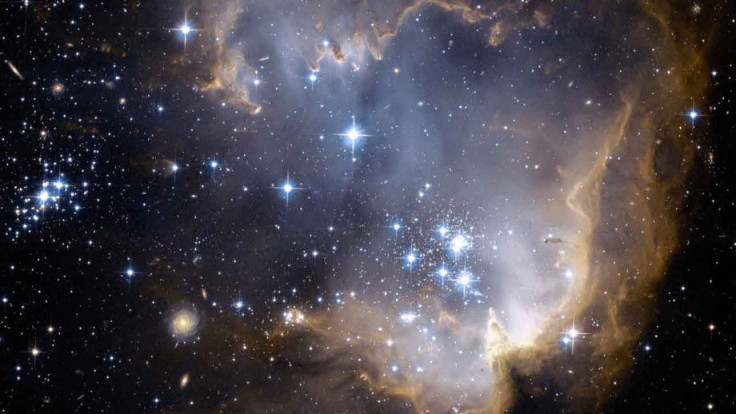Scientists Crack 50-Year-Old Magellanic Stream Mystery

KEY POINTS
- The Magellanic Stream has been a mystery to astronomers for decades
- Previous models could not explain why the structure is so massive
- A new study found that the Magellanic Clouds' halo could help explain the mystery
A team of researchers cracked a 50-year mystery about the mysterious Magellanic Stream, thus painting a clearer picture of our cosmic neighbor.
It was a few billion years ago when the Milky Way captured two dwarf galaxies that we know today as the Small and Large Magellanic clouds. They are the largest among the satellite galaxies of the Milky Way and they are visible in the Southern Hemisphere.
These cosmic neighbors are also carrying a mystery that scientists have been trying to understand for the last half-century. Along with the two galaxies is the Magellanic Stream, a massive gaseous structure that extends from the Magellanic Clouds.
Although it is only visible at radio wavelengths, the Magellanic Stream is so massive that it extends to nearly halfway across the sky and has the mass of more than a billion times that of the sun. It is much like an invisible giant companion of two of our galaxy's most prominent neighbors. It has been a mystery as to how exactly it came to be.
There have been speculations that this massive structure is torn out of the Magellanic Clouds hundreds of millions of years ago when they interacted with the Milky Way. Although plausible, this picture could only explain a small percentage of the structure's mass.
"That's why we came out with a new solution that is excellent at explaining the mass of the stream, which is the most urgent question to solve," said Elena D'Onghia of the University of Wisconsin-Madison (UW-Madison), who is also the co-author of a new study, in a news release.
For the study, published Wednesday in the journal Nature, the team used computer simulations, taking into account a more recent discovery that the Magellanic Clouds actually have their own halo of warm ionized gas that essentially acts like a protective cocoon. Most disk galaxies such as the Milky Way and Andromeda have such halos.
Based on the team's simulation, the Large Magellanic Cloud had been stripping off material from the Small Magellanic Cloud when they were still far away from the Milky Way. The halo, or corona, then heated the stolen clouds that eventually made up about 205 of the Magellanic Stream.
Then when the galaxies finally came to the Milky Way's orbit, part of the halo's mass went on to stretch and form the Magellanic Stream, providing a majority of its mass while also protecting it from disruptions from the Milky Way’s own halo.
"Here we report that, by including this Magellanic Corona in hydrodynamic simulations of the Magellanic Clouds falling onto the Milky Way, we can reproduce the Magellanic Stream and its leading arm," the researchers wrote in the study.
This simulation essentially provided a scenario that paints a clearer picture of the Magellanic Stream. Apart from explaining its shape and size, this scenario also explains the reason why it has no stars. This is because it is made up of the corona and not of the galaxies. Stellar halos typically contain just 1% of a galaxy's stellar mass.
"The stream is a 50-year puzzle," study co-author Andrew Fox of the Space Telescope Science Institute said in the news release. "We never had a good explanation of where it came from. What's really exciting is that we're closing in on an explanation now."
The researchers' work is said to be the first to provide an explanation for the mass of the Magellanic Stream and the team is now hoping to test this hypothesis using the Hubble Space Telescope.
© Copyright IBTimes 2025. All rights reserved.






















